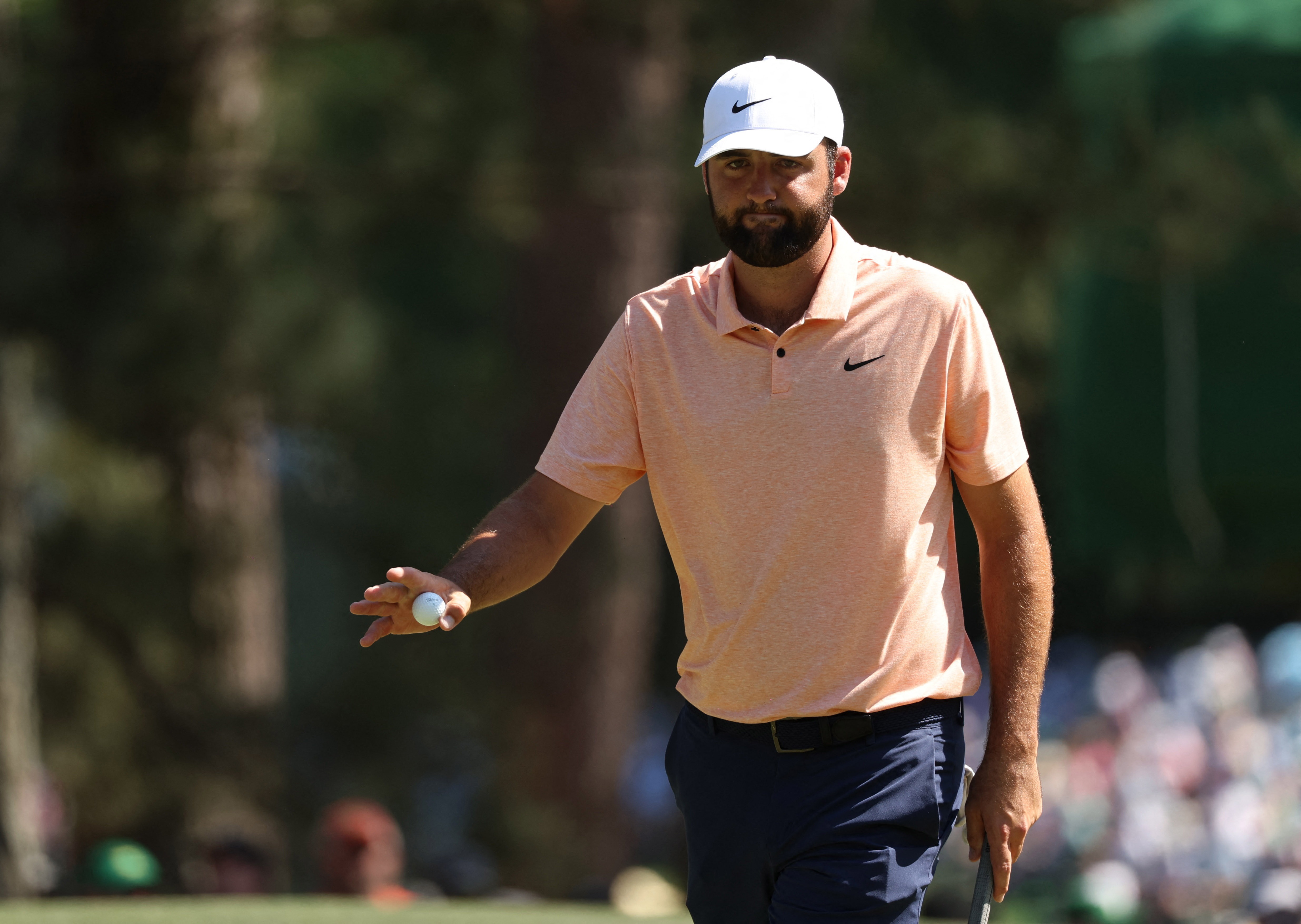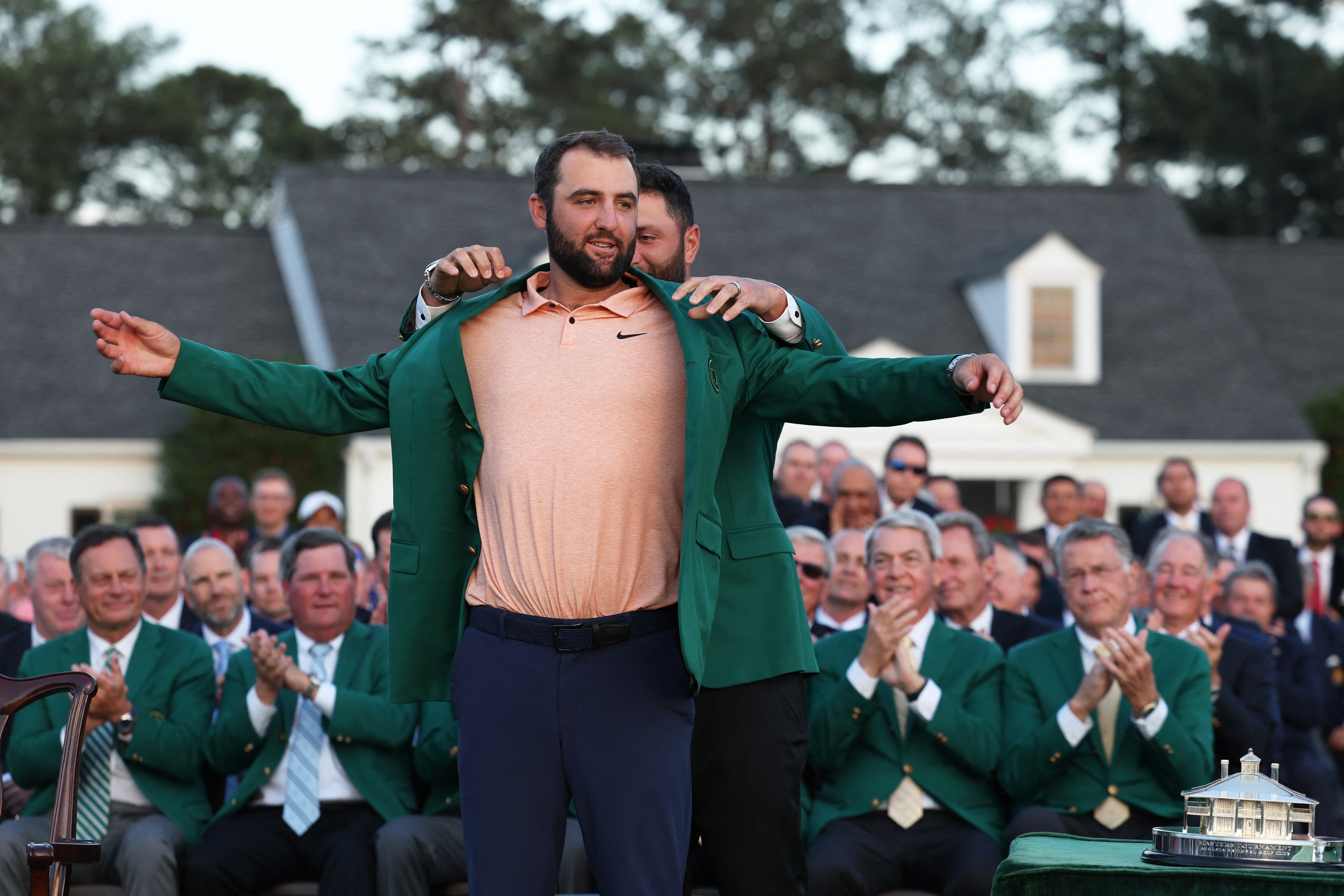Scottie Scheffler's Dominance Continues
Scottie Scheffler's recent victory at the Masters is solidifying his reputation as a force to be reckoned with in the golfing world. With three wins in his last four starts, including a Masters title, Scheffler is proving himself to be a formidable competitor.
Comparisons to Tiger Woods
Despite his reluctance to be compared to golfing legend Tiger Woods, Scheffler's performance at the Masters is drawing parallels to Woods' dominance in his prime. Scheffler's ability to maintain composure and deliver exceptional play under pressure is reminiscent of the golfing great.
Rising Star Ludvig Aberg Impresses
Ludvig Aberg, a rising star in the golfing world, showcased his talent by finishing second at the Masters. Aberg's performance, especially considering his limited professional experience, is a testament to his skill and potential to challenge Scheffler's dominance in the future.
Scheffler's Commanding Lead
Scottie Scheffler's victory at the Masters not only secured him another green jacket but also solidified his position as the world's number one golfer. With a significant lead in the professional world rankings, Scheffler is setting himself apart from his competitors in a manner reminiscent of Tiger Woods in his prime.

Impressive Display at Augusta
Scheffler's performance at Augusta was marked by sublime golf and strategic play. Despite a few setbacks, Scheffler's ability to focus on producing birdies at crucial moments set him apart from his rivals, who struggled to keep up with his pace and composure.
Future Success for Scheffler
With another Masters title under his belt, Scottie Scheffler is poised for continued success on the Major stage. His recent victory is a clear indication of his talent and determination, suggesting that more triumphs are in store for the world's number one golfer.
Frequently Asked Questions
Are pro golfers more focused on mental or physical training?
Professional golfers recognize the necessity of both physical prowess and mental fortitude within their sport. They emphasize the balance of the two in their training regimens. Mental training is just as important as physical practice. Mental training for pro golfers includes visualizing shots, managing stress and anxiety on the course and strategic thinking. A golfer might work with sports psychologists to develop mental resilience and focus, which are indispensable during competitive rounds.
Can pro golfers train too much?
Overtraining is a real risk for professional golfers. Overtraining can lead to injuries such as tendinitis. Golfers should listen to the body and make sure to prioritize recovery. Quality of practice is typically favored over quantity, with an emphasis on focused, intentional work. Rest days are strategically included in their schedules to allow the body to recuperate and to keep the mind sharp.
Does pro golfers follow a strict training diet?
Diet is a critical aspect of a pro golfer’s training as it impacts energy levels, recovery, and overall health. Nutritionists work with golfers to create meal plans that meet their specific needs. These plans consist of balanced portions of carbohydrates and proteins to provide energy for long days of playing and practicing while maintaining the ideal weight. It is important to have a strategy for hydration, since staying hydrated will help you maintain your focus and improve physical condition.
What muscle groups do pro golfers work out more intensely?
Pro golfers train numerous muscle groups with an emphasis on those which directly contribute to their golf swing and overall stability. Core strength plays a crucial role in controlling the golf swing and maintaining equilibrium. Abdominal, oblique and lower back exercises should be a part of every golfer’s routine. Golfers need to have strong gluteal muscles and leg muscles as a foundation. They also require flexibility and strength of the shoulders and arms in order to power and guide the club throughout its range. Golf-specific fitness programs are designed to focus on these key areas without neglecting overall physical health.
How do professional golfers improve their putting skills?
For professional golfers, putting practice is an important part of their daily routine. This is because the results of tournaments can be influenced by a player’s ability to putt. Golfers focus on technique as well as the ability to accurately read greens when they practice putting at different distances. Common are drills to improve consistency, like repeating putts at a certain distance. Others may use alignment tools or putting aids in order to increase their precision. Players can develop a reliable putting technique by repeating these drills.
What is a typical schedule of training for a professional player?
Professional golfers have a strict training regimen that addresses all aspects of the game. A typical training day might include a few hours of driving range work to perfect their swing, putting and chipping greens sessions, and golf-specific physical exercises. Mental conditioning can also be a big part of a golfer’s routine to keep them sharp and focused. Golfers can spend time with their coach to refine their technique and analyze performance data. Rest and recuperation are also given priority in order to maintain peak performances.
Statistics
- Up to 90% of professional golfers incorporate some form of cross-training into their fitness regimen.
- On average, professional golfers dedicate 30 to 40 hours per week practicing various aspects of their game.
- Nearly 80% of professional golfers engage in regular physical fitness programs designed specifically for golf.
- A survey suggests that 75% of pro golfers use a sports psychologist to aid with mental training and performance.
- Nearly 40% of professional golfers update their swing analysis software at least once every two years to stay at the forefront of technology.
- About 70% of professional golfers report practicing in adverse weather conditions to improve their adaptability to the elements.
- It is estimated that back pain affects up to 34% of pro golfers, making it one of the most common injuries in golf.
- According to a fitness survey, 55% of professional golfers prioritize yoga and pilates for improving flexibility and core strength.
External Links
mytpi.com
titleist.com
golfscience.org
trackingfootball.com
swingu.com
18strong.com
golfweek.usatoday.com
golfsimulatorguys.com
How To
How to select the best golf equipment for professional players
Choosing the right golf equipment for professional play involves testing various clubs to determine which best complement the golfer’s swing and playing style. Fitting by a professional is essential. They can assess swing speed, grip size and stance, to determine the best equipment. Pro golfers need to consider the conditions of play and select balls with optimal performance. Regularly assessing and updating equipment is necessary to stay competitive.

